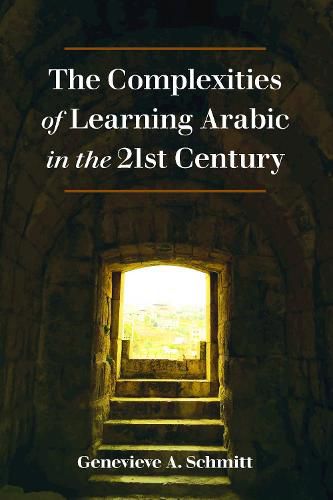Readings Newsletter
Become a Readings Member to make your shopping experience even easier.
Sign in or sign up for free!
You’re not far away from qualifying for FREE standard shipping within Australia
You’ve qualified for FREE standard shipping within Australia
The cart is loading…






This title is printed to order. This book may have been self-published. If so, we cannot guarantee the quality of the content. In the main most books will have gone through the editing process however some may not. We therefore suggest that you be aware of this before ordering this book. If in doubt check either the author or publisher’s details as we are unable to accept any returns unless they are faulty. Please contact us if you have any questions.
The Complexities of Learning Arabic in the 21st Century examines how of the four levels of difficulty and hundreds of languages spoken worldwide, Arabic is considered a category 4, which means it is among the most difficult languages to learn. While Modern Standard Arabic (Fusha) is most frequently taught, it is the native language of no country or people; however, the many regional dialects (Amiyya), often dismissed by educators, make up the living language of Arabic. Due to its linguistic complexities, educators are divided on how to teach Arabic in domestic language programs in the United States and in study abroad programs in the Arab world. An investigation into programs catering to Americans learning Arabic as a foreign language revealed a heavy emphasis on reading and writing in MSA, but scant attention given to speaking and listening in the real language of the people-dialects. In Complexities of Learning Arabic in the 21st Century, recommendations are made for improving pedagogy and materials so that students can gain genuine communicative competence in Arabic, which means not only understanding MSA, but also speaking and listening in at least one dialect, the language of the people.
$9.00 standard shipping within Australia
FREE standard shipping within Australia for orders over $100.00
Express & International shipping calculated at checkout
This title is printed to order. This book may have been self-published. If so, we cannot guarantee the quality of the content. In the main most books will have gone through the editing process however some may not. We therefore suggest that you be aware of this before ordering this book. If in doubt check either the author or publisher’s details as we are unable to accept any returns unless they are faulty. Please contact us if you have any questions.
The Complexities of Learning Arabic in the 21st Century examines how of the four levels of difficulty and hundreds of languages spoken worldwide, Arabic is considered a category 4, which means it is among the most difficult languages to learn. While Modern Standard Arabic (Fusha) is most frequently taught, it is the native language of no country or people; however, the many regional dialects (Amiyya), often dismissed by educators, make up the living language of Arabic. Due to its linguistic complexities, educators are divided on how to teach Arabic in domestic language programs in the United States and in study abroad programs in the Arab world. An investigation into programs catering to Americans learning Arabic as a foreign language revealed a heavy emphasis on reading and writing in MSA, but scant attention given to speaking and listening in the real language of the people-dialects. In Complexities of Learning Arabic in the 21st Century, recommendations are made for improving pedagogy and materials so that students can gain genuine communicative competence in Arabic, which means not only understanding MSA, but also speaking and listening in at least one dialect, the language of the people.